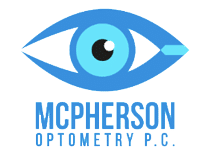What You Need to Know about Glaucoma
Did you know that glaucoma is one of the leading causes of blindness for people over the age of 60? Mayo Clinic reports that while it can occur at any age, it’s more common in older adults. Glaucoma is often an inherited condition. This is one vision problem you should never overlook.
What causes glaucoma?
Glaucoma is the result of deterioration of the optic nerve. This leads to a buildup of a fluid called aqueous humor, which puts pressure on the front part of the eye. Normally this internal fluid that flows throughout the eye drains out through a mesh-like tissue where the iris and cornea meet. When the aqueous humor fluid gets blocked or can’t drain at its normal rate, eye pressure increases.
While the reason for this blockage is not currently known, scientists have identified genes related to high eye pressure and optic nerve damage. People over age 40 who have a family history of glaucoma should get a complete eye exam every one to two years.
Understanding the two most common types of glaucoma
The two main kinds of glaucoma include:
Open-angle glaucoma: The most common form of the disease, it’s also called wide-angle glaucoma. The drain structure in the eye, called the trabecular meshwork, appears normal, but fluid is partially blocked and doesn’t flow freely like it should.
Angle-closure glaucoma: Also called closed-angle glaucoma, this occurs when a bulging iris narrows or blocks the drainage angle where the cornea and iris come together. This prevents the fluid from circulating through the eye, and pressure increases. Angle-closure glaucoma may occur gradually (chronic) or suddenly (acute). Acute angle-closure glaucoma is a medical emergency.
What are the symptoms of glaucoma?
Some forms of glaucoma have no warning signs, and the effect is so gradual that a person might not even notice a change in vision until the condition is advanced. However, open-angle glaucoma often presents as:
- Blotchy blind spots in peripheral or central vision, often in both eyes.
- Tunnel vision when it’s in the progressed stages.
Acute angle-closure glaucoma’s symptoms include:
- Eye pain
- Nausea and vomiting
- Severe headache
- Blurred vision
- Halos around lights
- Eye redness
It’s important to seek treatment at an emergency room or your ophthalmologist’s office if you experience the symptoms of acute angle-closure glaucoma.
Remember: Most people with glaucoma have no early symptoms or pain. Vision loss due to the condition can’t be recovered, but the disease can be controlled with early detection and treatment. To schedule a checkup, please contact us today.

Leave a Reply
Want to join the discussion?Feel free to contribute!